How do dolphins breathe? I hope you know dolphins are marine mammals and not fish. This means they don’t have gills to extract oxygen from water but instead use their lungs to breathe. So, they need to come up to the surface frequently to catch a breath. The blowhole on their head is like their “nose” and helps them easily surface for air.
In this article, I will describe in more detail how their lungs perform and their breathing technique. So read on to discover some fascinating facts about the breathing of dolphins.
Do Dolphins Breathe Oxygen or Water?
Dolphins breathe oxygen, not water, as they are mammals. Similar to humans, they require oxygen to survive. However, what sets them apart from humans is the way they breathe it.

Dolphins breathe through a unique respiratory organ called a blowhole, which is a hole located on the top of their heads. This blowhole serves as their nostril, and it allows them to take in air without having to open their mouths.
When a dolphin surfaces, it opens its blowhole and exhales warm, moist air. This air can sometimes reach 300 miles per hour and can be heard up to 20 miles away! After exhaling, the dolphin quickly closes its blowhole to prevent water from entering their lungs. They then inhale fresh oxygen-rich air through the blowhole and into their lungs.
Dolphins are known as voluntary breathers, which means they must consciously come up for air. Unlike humans, dolphins don’t have an automatic respiratory system that controls their breathing.
They have to actively think about taking each breath they need to survive, which makes them vulnerable to drowning if they become unconscious or too fatigued to surface for air.
Do Dolphins Have Lungs?
Yes, dolphins have lungs and are essentially mammals that breathe air. Their lungs are similar in structure to other mammalian lungs and are housed within the ribcage of the dolphin.
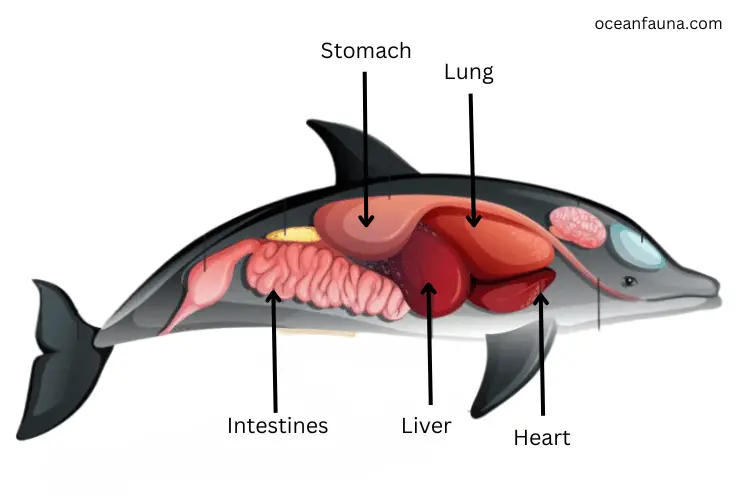
The process of respiration in dolphins involves inhaling air through the blowhole at the top of their head, which is covered by a muscular flap of skin called the dorsal nasal plug. The air then travels down the trachea and into the lungs, exchanging it for carbon dioxide.
A dolphin lung’s structure consists of lobes divided into smaller air sacs called alveoli. These alveoli are responsible for the exchange of gases, with oxygen entering through the blood vessels and carbon dioxide being expelled back out. A dolphin’s lung is determined by its body size and its potential need for prolonged dives.
The respiratory system in a dolphin also includes a series of airways and valves that help regulate airflow in and out of the lungs. This includes the blowhole at the top of their head, which can be opened and closed by a set of muscles.
Because of their reliance on air for respiration, dolphins must make frequent trips to the water’s surface to catch a breath. While underwater, they can hold their breath for several minutes at a time but must eventually return to the surface for air.
Do Dolphins Have Blowholes?
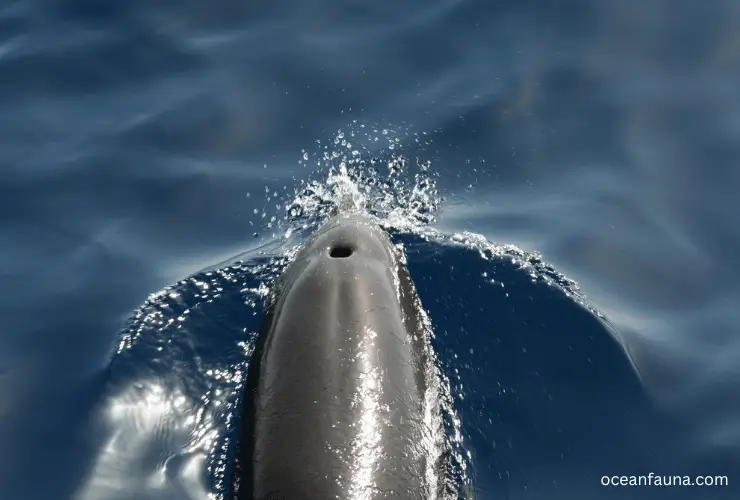
Yes, dolphins have blowholes, openings on the top of their heads. These blowholes serve as the dolphins’ unique respiratory system since they are mammals and need to breathe air to survive. The blowholes are covered by a muscular flap that prevents water from entering the dolphin’s respiratory system when it is underwater.
Dolphins have a single blowhole that is located on the top of their head. This blowhole is connected to the dolphins’ trachea and lungs and is responsible for air exchange between the dolphin and its environment.
When a dolphin surfaces to breathe, it opens its blowhole and exhales stale air. It then inhales fresh air before closing its blowhole and diving back underwater.
The structure of the dolphin’s blowhole is unique among cetaceans. Unlike whales and porpoises, which have two blowholes, dolphins have a single blowhole that is positioned at an angle. This allows the dolphin to keep one eye above water while it breathes, allowing it to spot predators and prey while surfacing.
In addition to their primary function as a respiratory system, dolphins’ blowholes also play a role in communication. Dolphins use a variety of vocalizations and clicks to communicate with each other, and some of these sounds are produced through the blowhole.
By manipulating the muscles around the blowhole, dolphins can also create a variety of whistles and clicks, which they use for social communication and echolocation.
How Do Dolphins Breathe with Lungs and Blowholes?
Dolphins are mammals; like all mammals, they breathe with their lungs. Unlike humans, however, dolphins cannot breathe through their mouths. Instead, they have a blowhole (nose or nostril of marine mammals) on top of their head, which they use to take in air.
When a dolphin surfaces, it exhales forcefully, creating a spray of water from its blowhole. This water can be seen from a distance and is often a sign that dolphins are nearby. After exhaling, the dolphin quickly inhales fresh air through its blowhole before diving back down.
The dolphin’s blowhole is connected to its respiratory system, which includes two lungs. These lungs are much larger than human lungs, allowing dolphins to store more oxygen and hold their breath longer. In fact, some species of dolphins can stay underwater for up to 20 minutes before needing to surface for air.
Dolphins have a unique way of breathing that allows them to quickly exchange air while moving rapidly through the water. A dolphin opens its blowhole valve and breathes in to take in air.
When it is ready to dive down, the dolphin contracts a set of muscles around its blowhole, sealing it shut. This prevents water from entering the respiratory system and allows the dolphin to remain underwater.
When a dolphin is ready to surface again, it contracts the same muscles to open its blowhole and exhale the old air. This process is repeated each time the dolphin surfaces for air.
Do Dolphins Breach to Breathe?
Yes, dolphins jump or breach the ocean’s surface to take in air like whales. Unlike humans, dolphins cannot breathe underwater and must surface periodically to breathe through their blowholes, which are located on top of their heads.
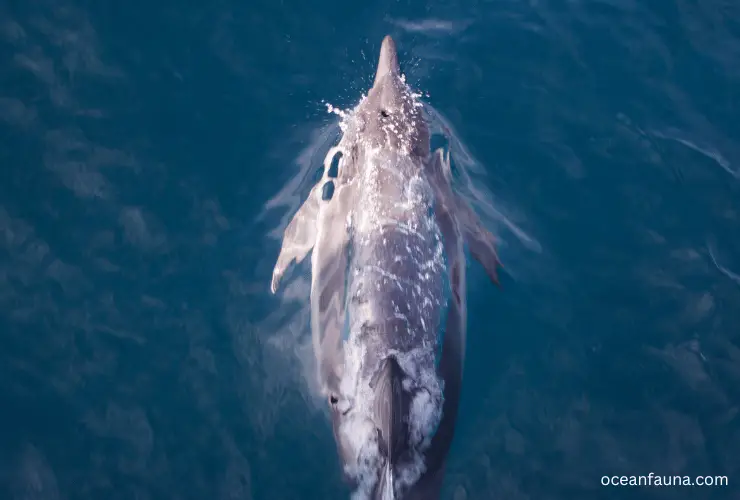
When dolphins breach, they typically exhale first and then take their next breath. The powerful exhale creates a spray of water at the ocean’s surface, referred to as a dolphin “spout”.
Breaching is a common behaviour among dolphins, and it serves several purposes. In addition to helping them take in air, breaching can also be used for communication, to intimidate or play with other dolphins, or to get a better view of their surroundings.
Some species of dolphins even breach as a hunting tactic, using the force of their body to stun or disorient prey.
Despite their need to breathe air, dolphins are well adapted to life in the water. Their bodies are streamlined and hydrodynamic, with powerful tails and flippers that allow them to swim with speed and agility.
How Long Can Dolphins Hold Their Breath?
Dolphins are known for their impressive diving abilities and ability to hold their breath underwater for extended periods. According to NOAA, Atlantic spotted dolphins have been recorded diving up to 200 feet and holding their breath for up to ten minutes. However, the majority of their lives are less than 30 feet and last between 2 to 6 minutes.
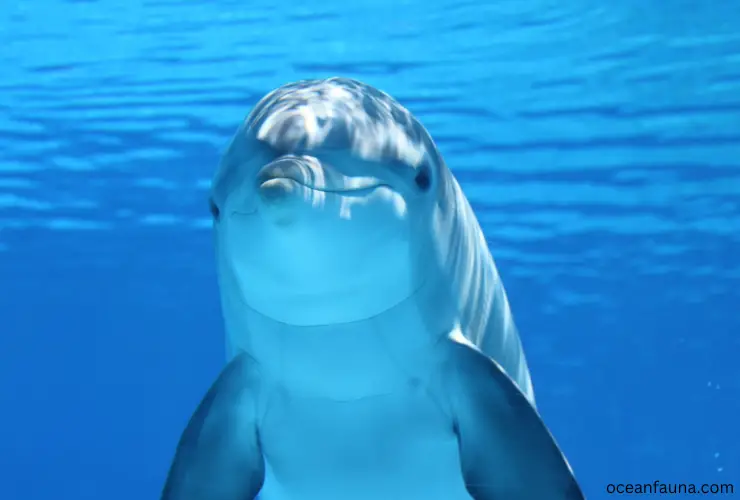
While some dolphins have been known to hold their breath for up to 20 minutes, the regular maximum submersion time is considered to be ten minutes. This is because dolphins have adapted special techniques to conserve oxygen while diving, such as slowing down their metabolism and redirecting blood flow from non-essential organs to vital ones.
Furthermore, it’s worth mentioning that different dolphin species may have varying abilities regarding breath-holding. For instance, the common dolphin can hold its breath for about 7-8 minutes, while the bottlenose dolphin can go up to 12 minutes.
How Do Dolphins Sleep If They Need to Breathe?
When dolphins sleep, they do so with only half of their brains at a time. This state of sleep is known as Unihemispheric Slow-Wave Sleep (USWS), and it allows these mammals to rest and recharge while still being alert enough to avoid predators and breathe. Essentially, one hemisphere of the dolphin’s brain remains awake while the other half rests.
During USWS, the awake hemisphere of the brain controls breathing and swimming behaviour, allowing the dolphin to continue surfacing for air as needed. Meanwhile, the sleeping hemisphere shuts down, giving the dolphin much-needed rest.
There are also different ways that dolphins sleep, depending on their location. For example, in deeper waters, dolphins will often rest motionless at the water’s surface, breathing regularly. This behaviour is known as logging.
Alternatively, they may swim very slowly and steadily, close to the surface, for hours at a time to allow their awake hemisphere to continue breathing and swimming.
In shallower waters, dolphins may even sleep on the seabed, regularly rising to the surface to breathe. This behaviour, known as bottlenose porpoising, can last for 20-30 minutes at a time. However, this behaviour is rare, and most dolphins prefer to sleep on the water’s surface.
Can Dolphins Live on Land Forever?
As you know, dolphins require air to breathe, which is why they surface in the water. This may lead you to wonder if they are capable of living on land since they can breathe air.
No, the dolphins cannot live on land forever. Although dolphins are mammals and require air to breathe, they are not adapted to live on land. In fact, being out of water for too long can be deadly for dolphins. Dolphins have evolved specifically to survive in the ocean, and their physiology and biology are well-suited to life in the water, but not on land.
Dolphins have not developed the necessary muscles to sustain themselves on land, and their bodies are not adapted to the dry and harsh conditions of a terrestrial environment.
Living in water allows dolphins to move easily and gracefully, using their powerful tail flukes to propel themselves through the water, and their streamlined bodies allow them to swim quickly and efficiently. These same features become hindrances on land, making it difficult for dolphins to move around and stay mobile.
A dolphin can live out of water for hours, but only if it is kept wet and cool. If a dolphin is stranded on land or out of water for too long, it can suffer from heatstroke and dehydration, which can ultimately be fatal.
One of the biggest dangers to a dolphin being out of water is their inability to regulate their body temperature, which is normally maintained through the surrounding water.
Conclusion
I hope you have understood how dolphins breathe. Like other mammals, dolphins have lungs and blowholes to take in the air. They need to come up to the surface to breathe, just like whales do. Dolphins cannot breathe underwater and need to surface from time to time to take in air through their blowholes, which are situated on top of their heads.
If you want to know more about their breathing, let me know. I will answer them as soon as possible.

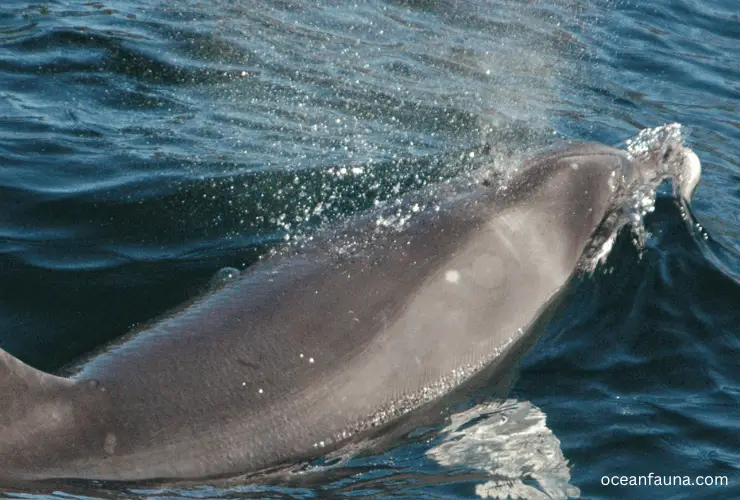
1 thought on “How Do Dolphins Breathe? [Explained]”